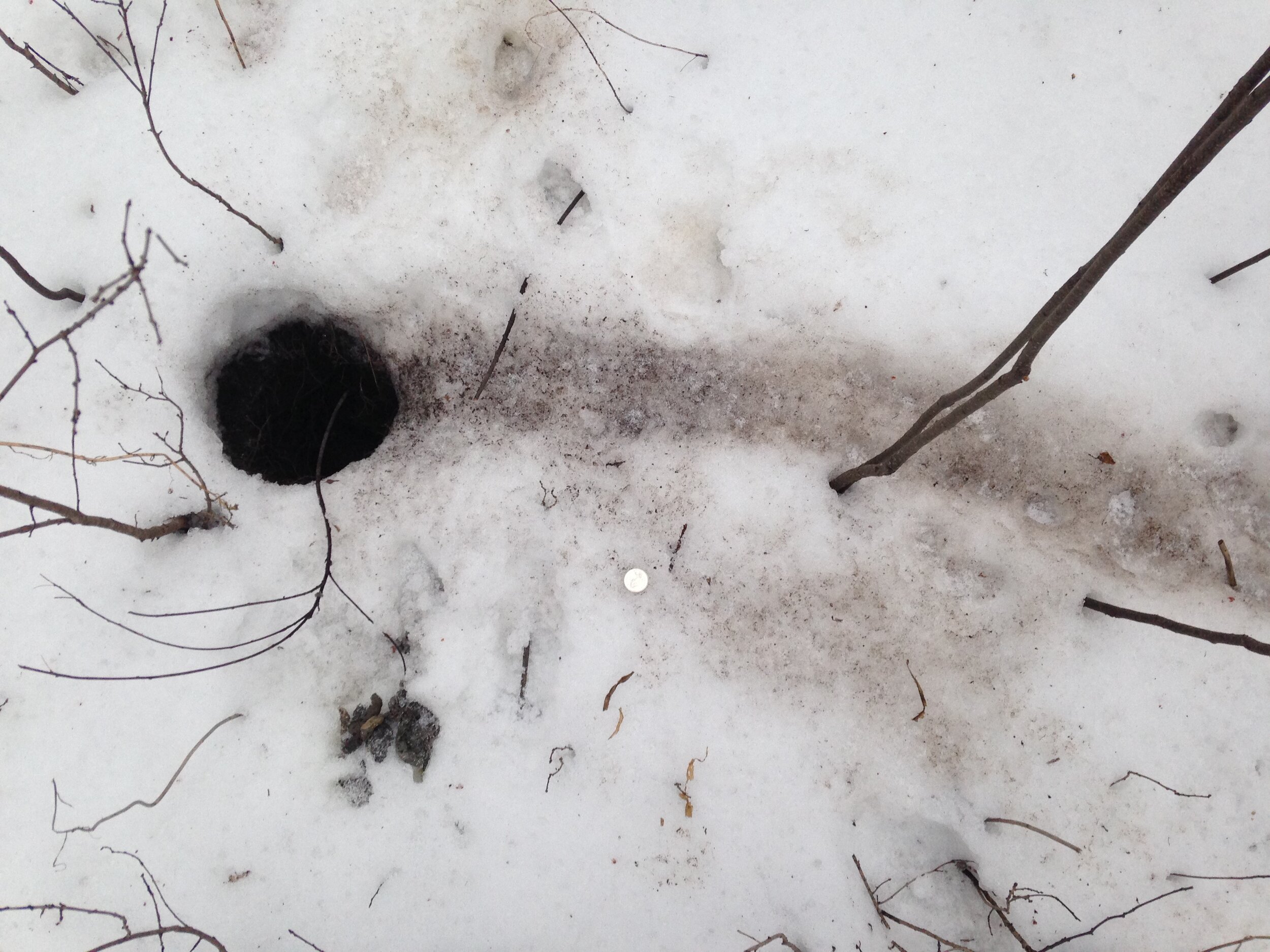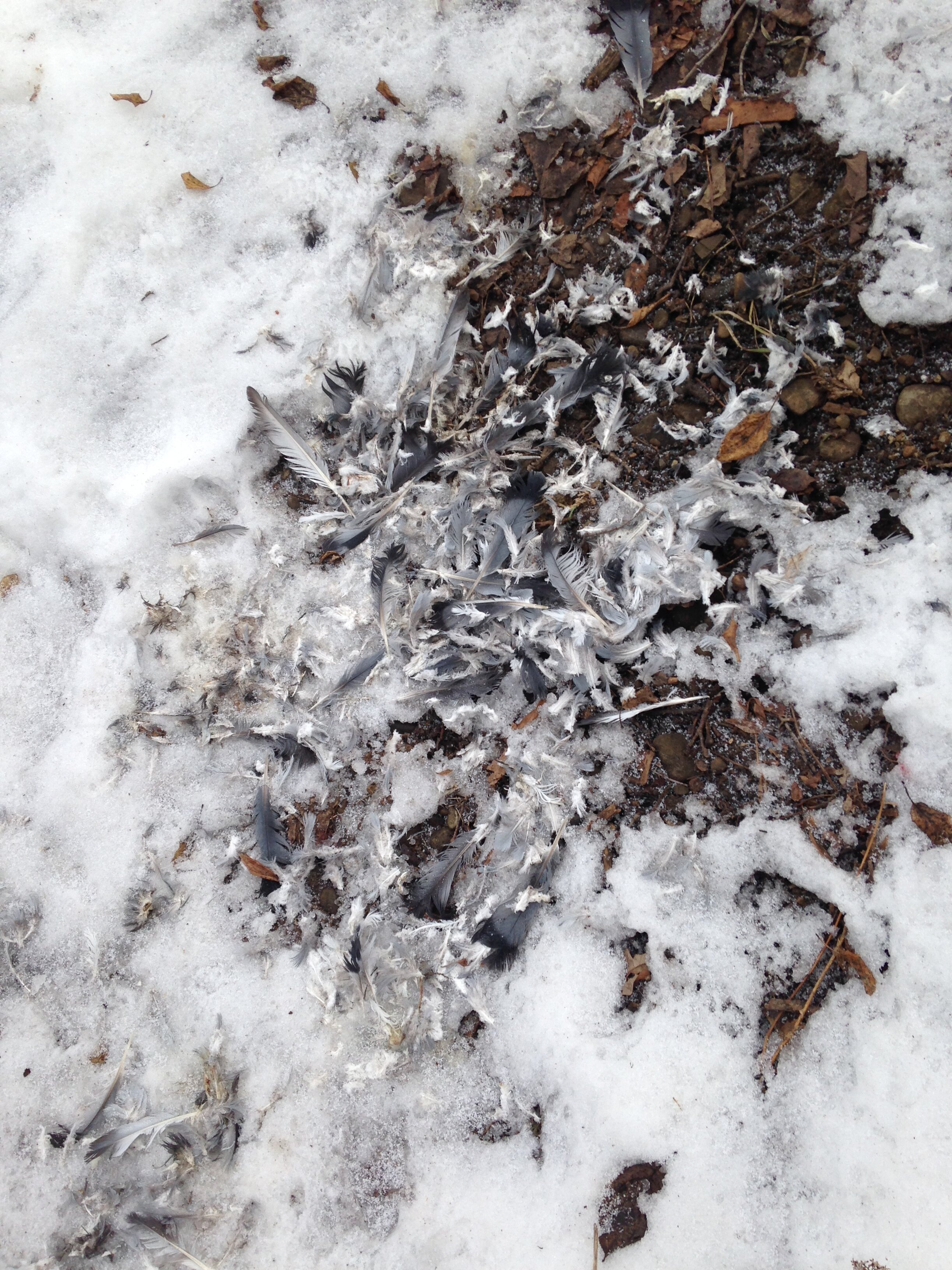Tracking along the Eramosa River, Jan 17, 2021
Today I went out to find Beaver (Castor canadensis) sign which a friend had told me about yesterday evening. He had seen what looked like a trail emerging from the river, heading up the bank and into the scrubby wooded edge on the far side of the river from a trail by his house and was thinking it was a Beaver. I had previously seen Beaver signs further up the river when I was out trailing an Opossum a few weeks ago and it would be likely that the Beavers up there would come down to his neck of the woods. I thought I would go and check it out.
I left the house around 8am to an overcast sky with the wind coming from the West. It was about 0°C, and it was quiet but for the Mallards (Anas platyrhyncos) on the river. It had snowed very slightly a few hours before, but not much at all. The trail was pretty icy and I slipped a couple of times, but the real challenge was getting down a frozen-over rock wall so I could walk along the rivers edge. I made it, but I had to slide down on my ass and stop every two feet by holding on to a rock or trunk which jutted out from the ice.
Once successfully down from the wall I made my way to the rivers edge to start exploring. The first thing I noticed was a frozen Mink trail along the rivers edge. It has been warm and melty over the past few days so I bet these were maybe two days old, and only refroze solid last night.
I followed some people tracks, someone with narrow feet, along the rivers edge when I saw a hole in through the snow, down through the mud, and maybe leading to a tunnel coming from the river.
Hole, trail, scat with canadian 25-cent piece for scale (the diameter of the 25-cent piece measures 23.81 mm)
The hole was 7.2 m away from the rivers edge and was 14 cm wide. It looked well used, well worn in with a couple of roots showing at the edge, and a small twig leaning over the top. The trail which led from the hole ranged from 9 - 14 cm W and grew cleaner the further it got from the hole, leading me to believe that this hole used for emerging from, but possibly also entering into if the animal has been on top of the snow for a while. 24 cm Northish from the hole, or between the hole and the bottom of the photo above was a pile of frozen scat.
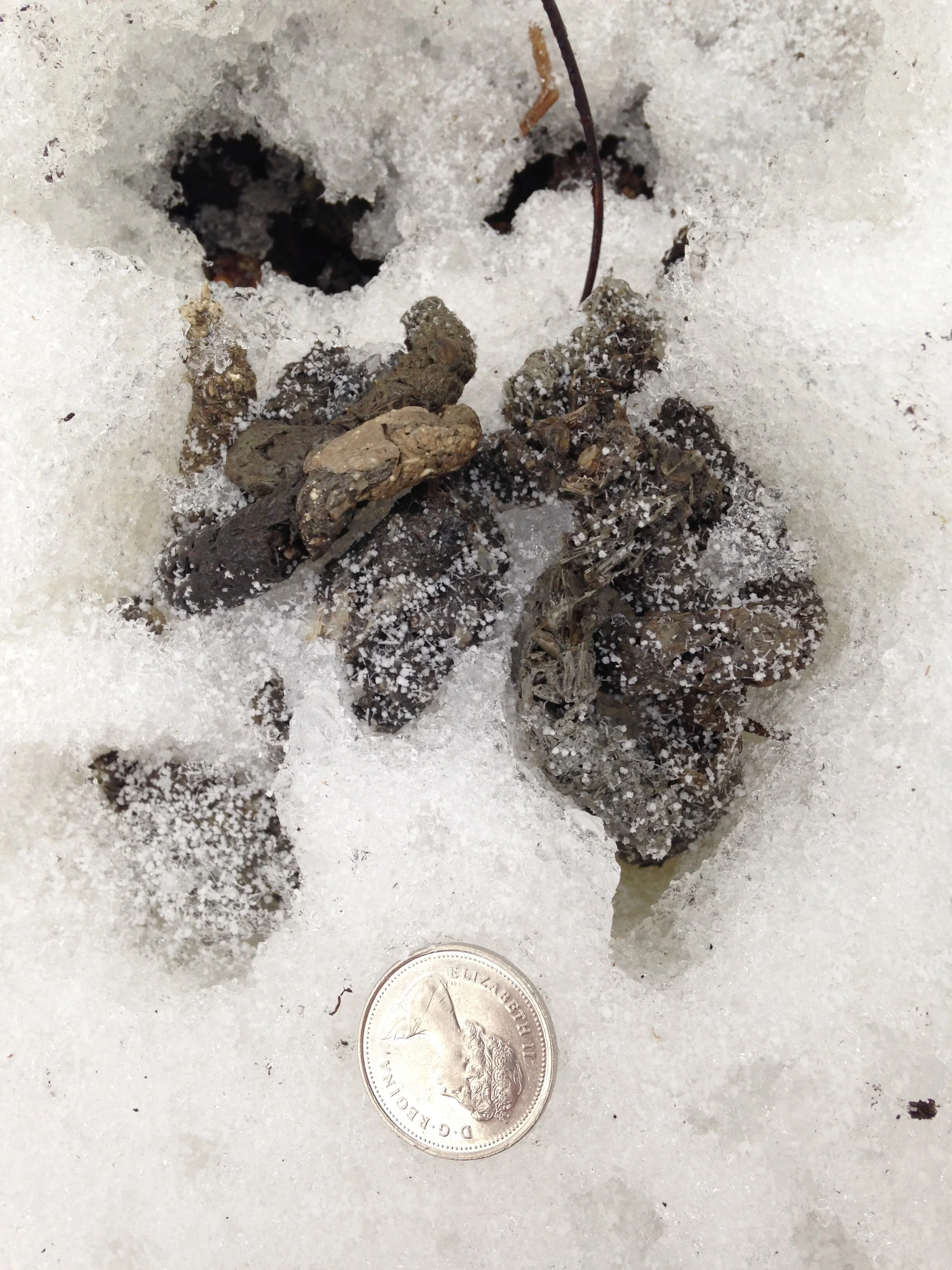

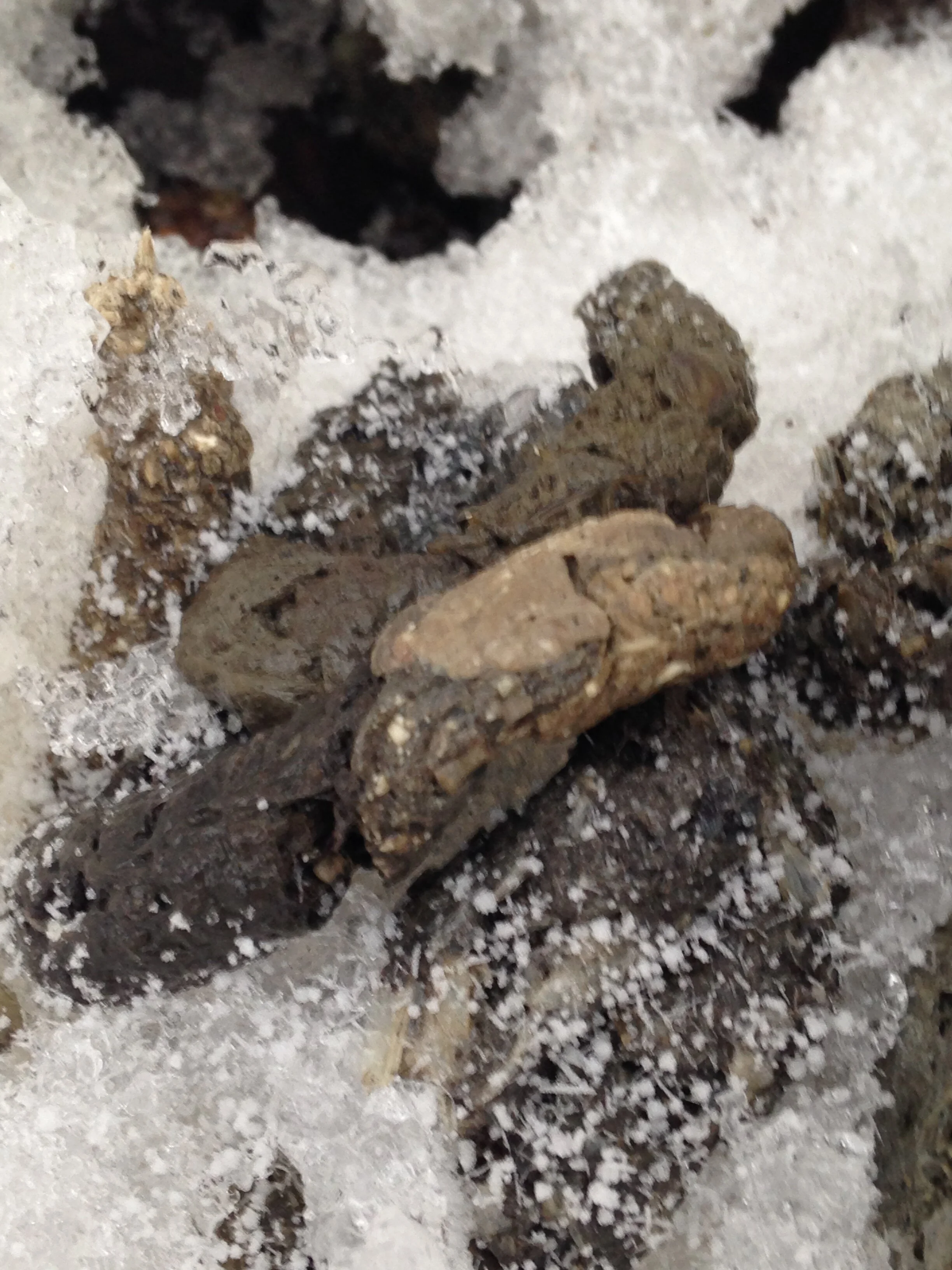
The scat on the top of the latrine, brownish and without snowflakes on it, measured 30 mm L x 9 mm W. Only in reviewing the photos did I recognize that there were no snowflakes on it, so perhaps this scat was fresher than the last snow.
I have been trailing Minks along the Eramosa River quite a bit over the last couple of weeks, and this scat was starting to look familiar though still different from the ones I had seen before. Maybe better to say familiar in theme rather than a form? Maybe that’s just me projecting, but you can see the varied composition of the scat without getting right into it. I think the grey piece may contain Crayfish (Orconectes spp. and Cambarus spp.) exoskeletal fragments or maybe quill fragments from consuming something with feathers, but I’m not certain.
After a while of kneeling by the hole I got up and moved downstream. I wanted to continue looking for any signs of Beaver that might be out there, but then again I got distracted by another hole and more scat.




This scat pictured above was about 1.2 - 1.3 cm D and about 11 - 12 cm L . I had to excavate it a little as it had melted into the snow and wasn’t too visible. I wonder if it may be a bit long for a Mink scat, though there was some of that close by, deposited maybe 10 cm away? My first thought went to Red Fox (Vulpes vulpes), though I can’t be certain. I know they sometimes mark other animals dens and around older burrows, perhaps this is what was happening here? This hole did not appear to be used recently and there has been no considerable snow in the past two weeks to cover up any use. As for the other scat, it appeared to be Mink-ish again, likely full of the chitinous exoskeleton of the Crayfish they are consuming.
After checking out this spot I continued downstream towards the spot my pal had told me about. I thought there was going to be nothing because I thought I was passed the area he had mentioned, but I came around a large Buckthorn and there was a trail, darkened with silt carried by fur, set against the white of the snow.
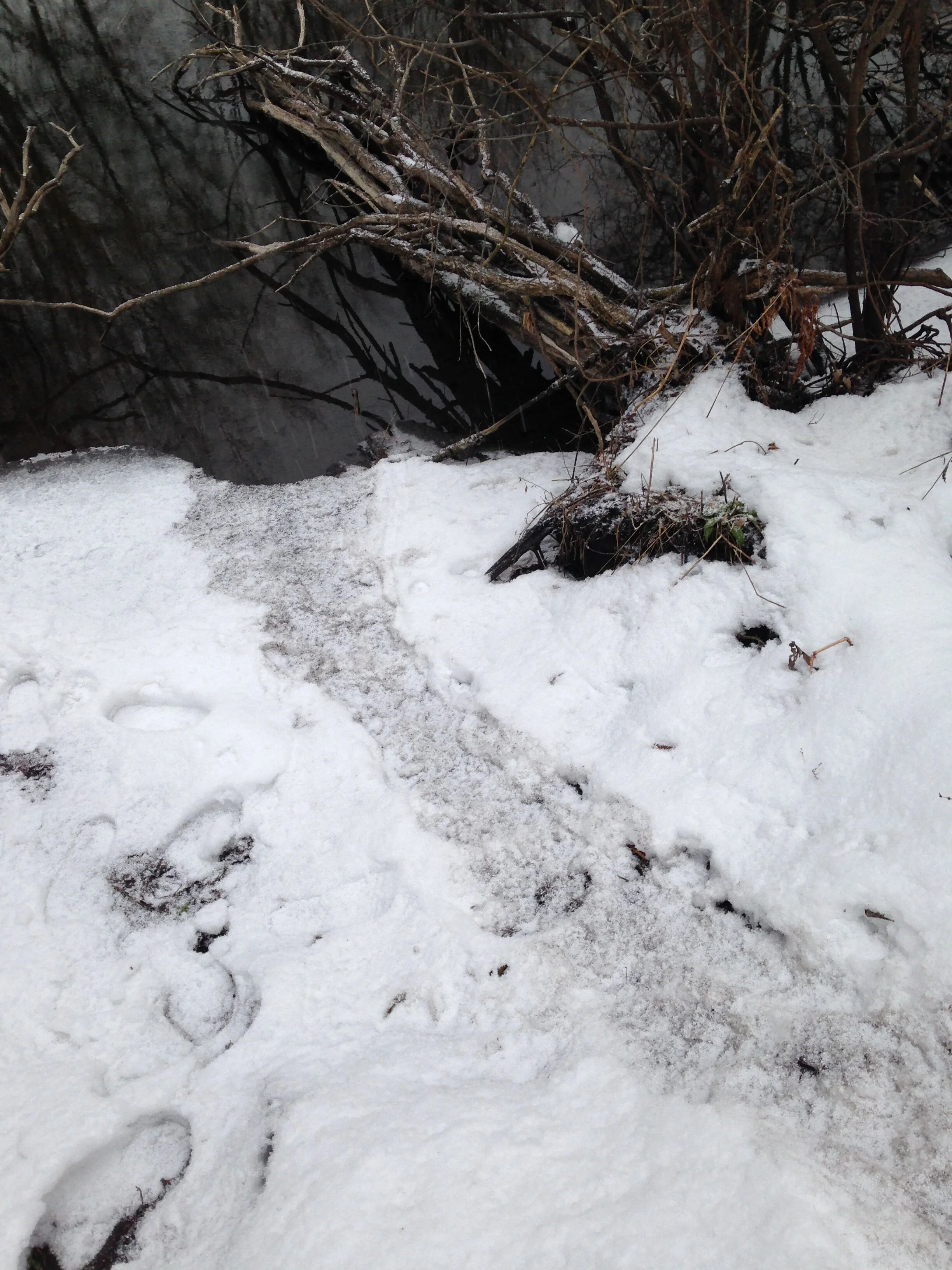
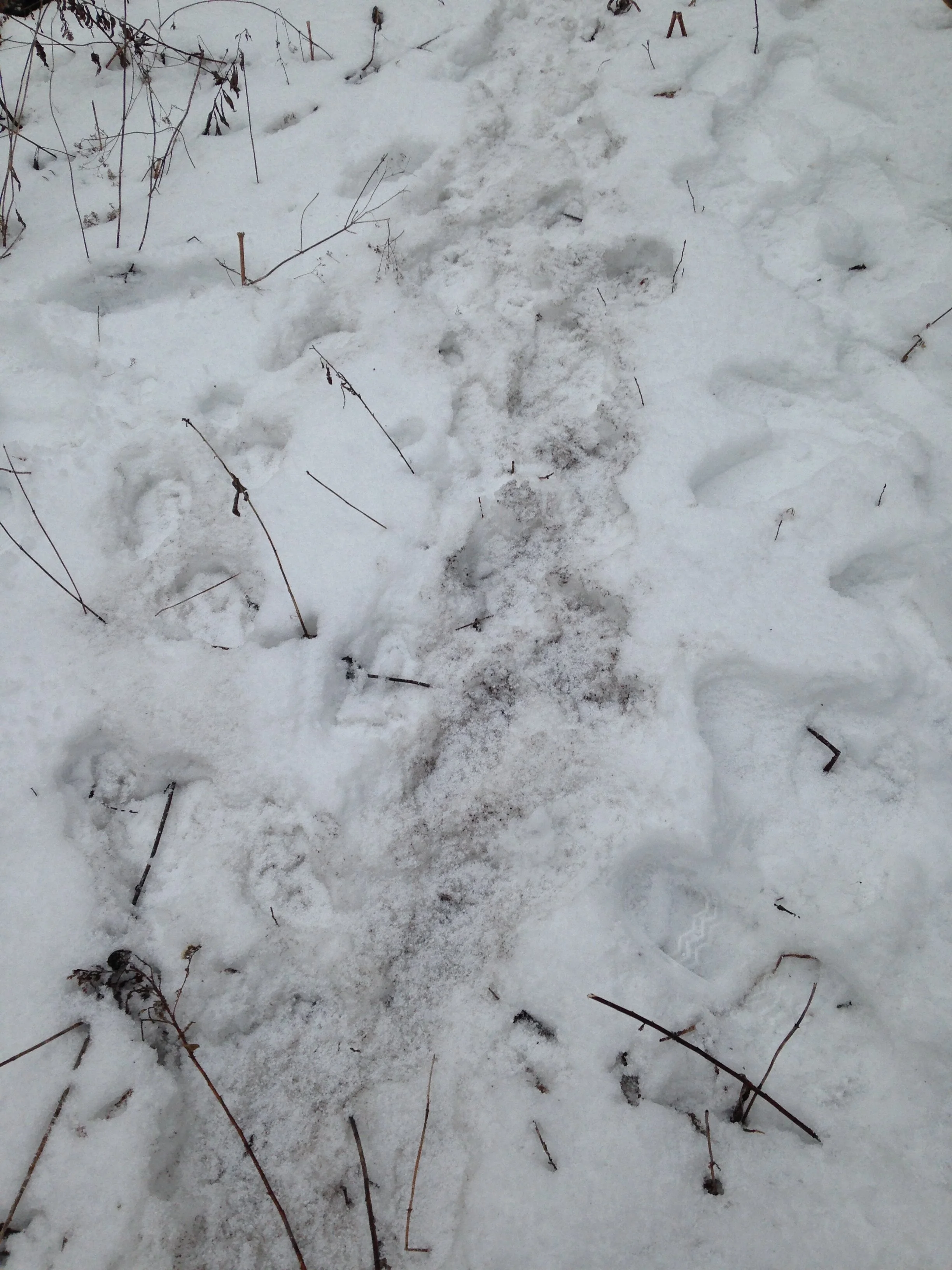
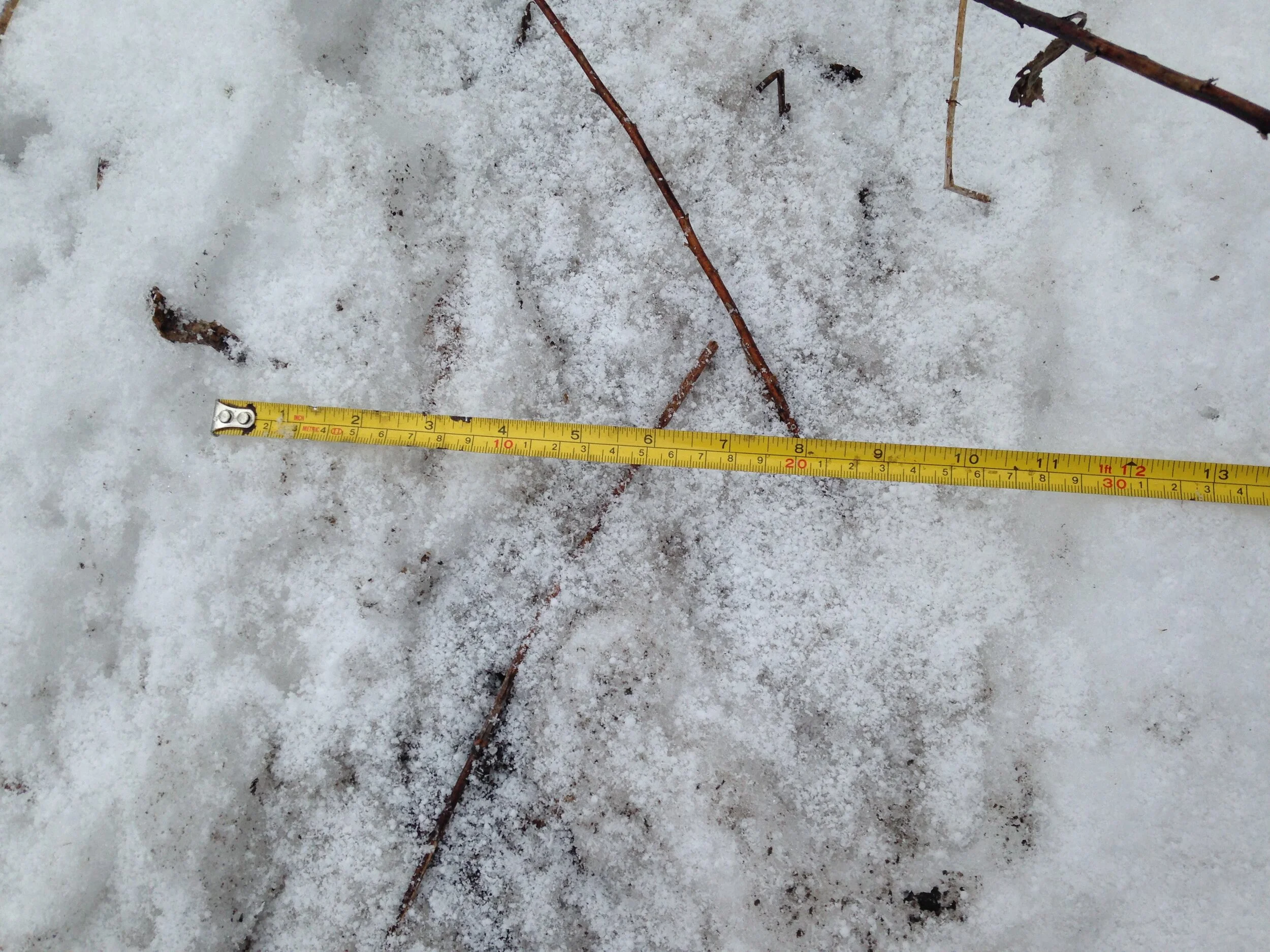
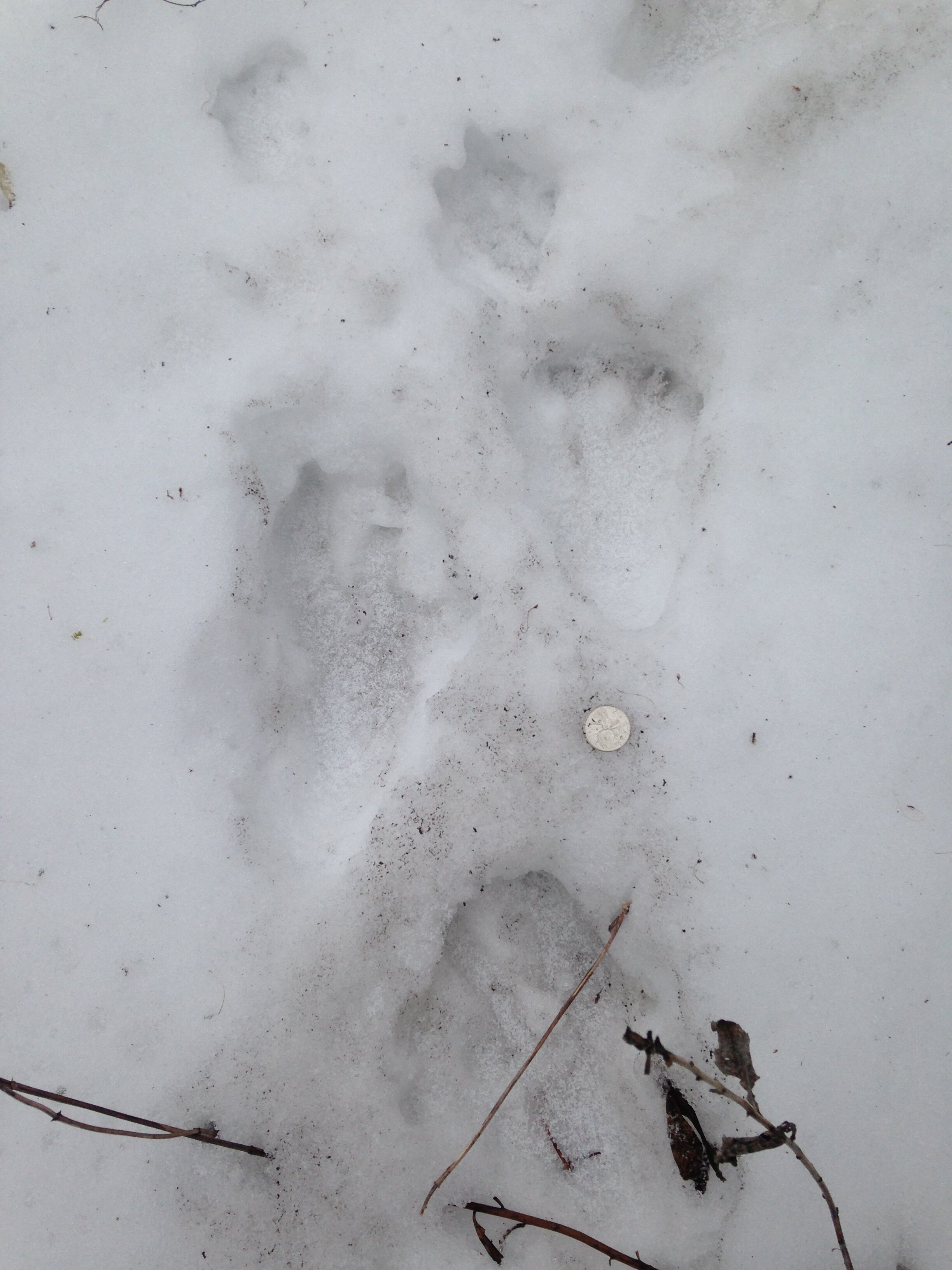
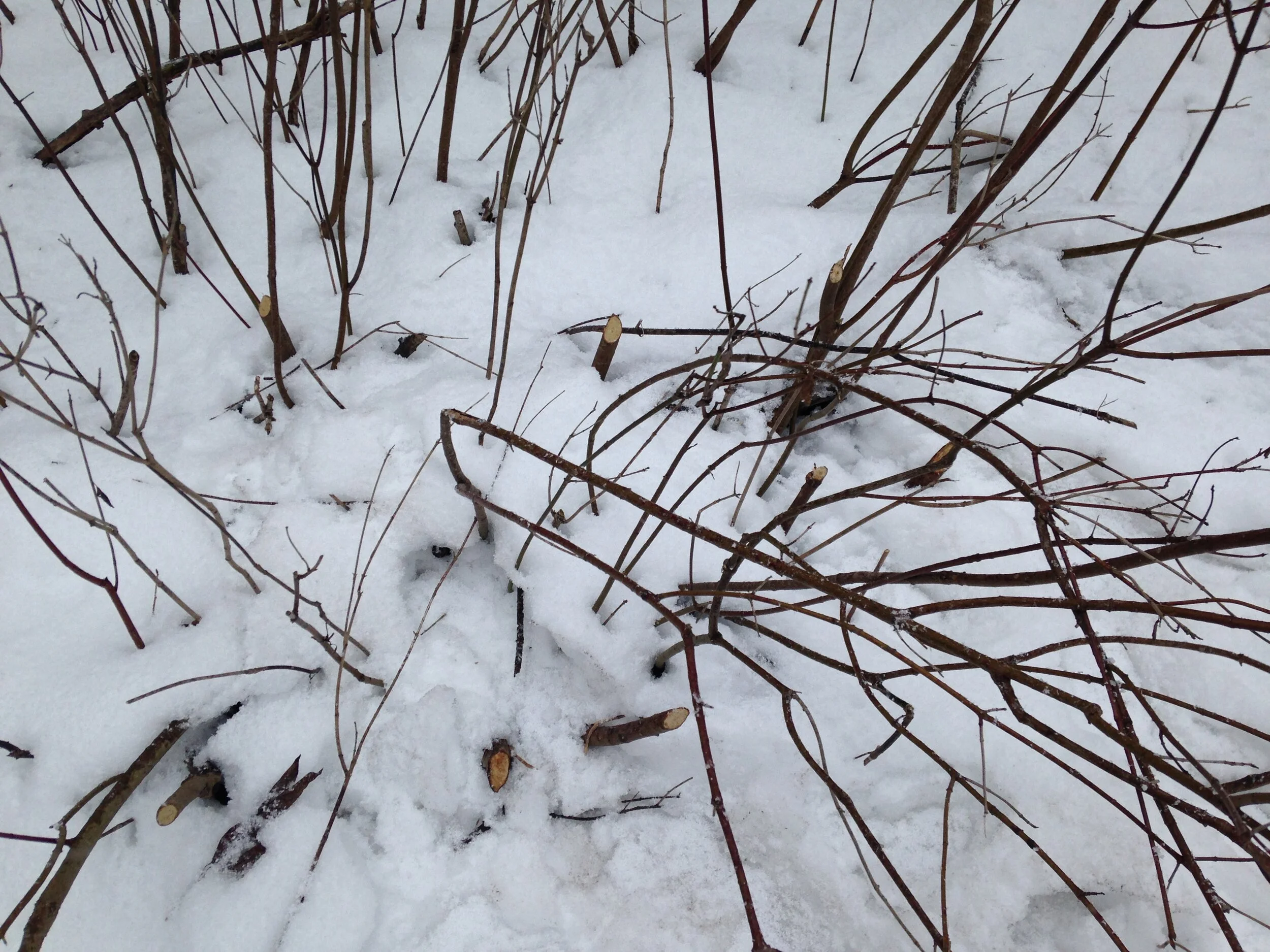
I followed the trail a little to see what the animal was up to and it looked like the Beaver made their way towards a copse of Red-Osier Dogwood (Cornus sericea) for a bite to eat. The trail measured between 23 cm - 27 cm, I went back to the trail and took a photo of some of the Beaver tracks, but not until later in the day when I returned did I get photos of the trail and the chews.
Mission accomplished! There was a Beaver trail. I was glad I kept going despite thinking that I had passed the area where I thought the trail was described.
I turned around and decided to head back home for some breakfast. I always feel a little awkward coming back onto the trail, especially with runners or Dog walkers going by. I am unsure why, but I guess I might be afraid that they think I’m up to no good or something, or I don’t belong there. But no one bothered me (few people ever do these days), and I headed back up the icy wall of death only to come across a big pile of Rock Dove (Columba livia) feathers!
All the feathers I could see appeared to be plucked, and not sheared, but I didn’t get in too close. Just a couple feet from the feathers was a steeper part of the icy rock wall and I didn’t want to tempt it. I looked down for a moment and then looked up to the powerlines stretching from the top of the hill I was on, down across the river and on to the abutment on the other side. Usually the Pigeons are hanging out there, perched on the powerlines, but not now. Was this kill new enough for them to be concerned and have flown? I doubt it.. maybe it was just too early and they were still roosting under the bridge? I didn’t go and check. I was hungry and it was time to get home.
P.S. The adventure continues!
When I returned later in the day to get some photos of the Beaver trail, I took a different route to return back to my place. The snow started coming down, lightly, but enough. It was getting darker, not much but enough, and I just wanted to get back home. I tried to be quick but then I came on to an old trail which kind of had the cadence of a Red Fox, perhaps the same Fox that had deposited the scat mentioned earlier. I followed for a little and then along the trail I noticed a darker spot under some of the snow. I kicked it up from below, carefully bouncing it on my boot a little to shake off some of the snow. I thought it was going to be some scat, but when I picked up the packed icy snow, I noticed a little bit of redness like blood. I rubbed off the snow a little and realized it was some leftovers of a possible kill or meal.
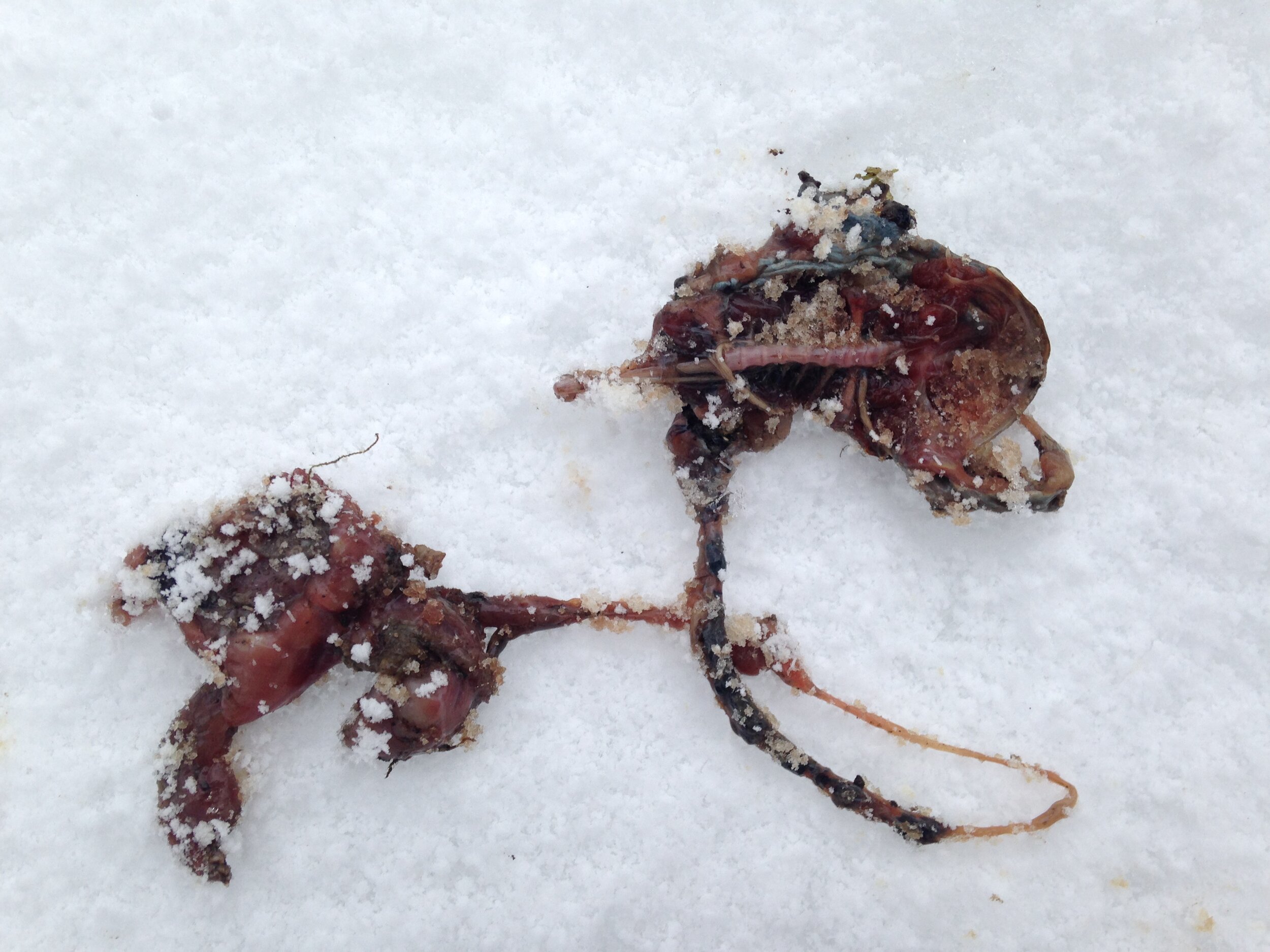

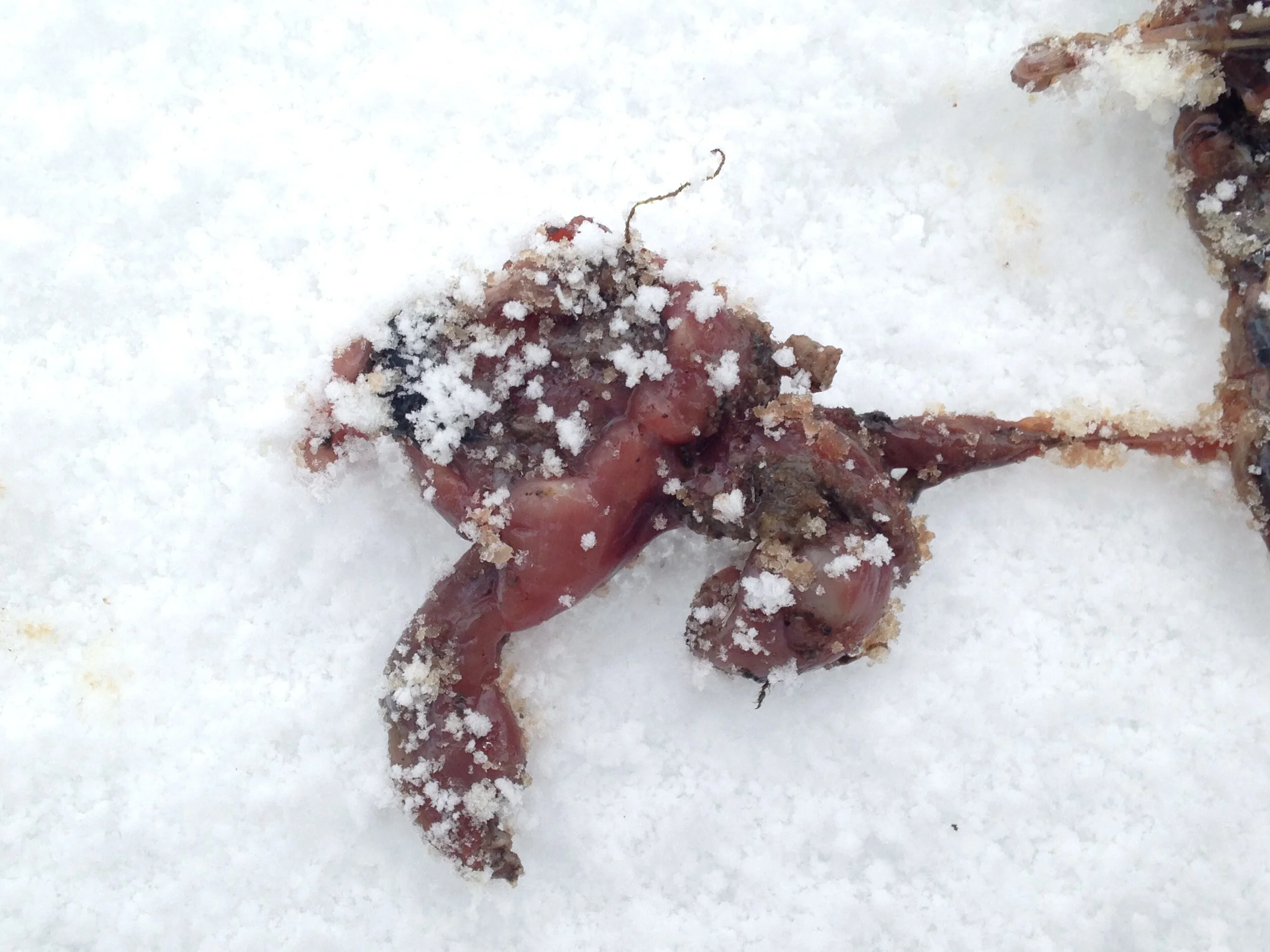
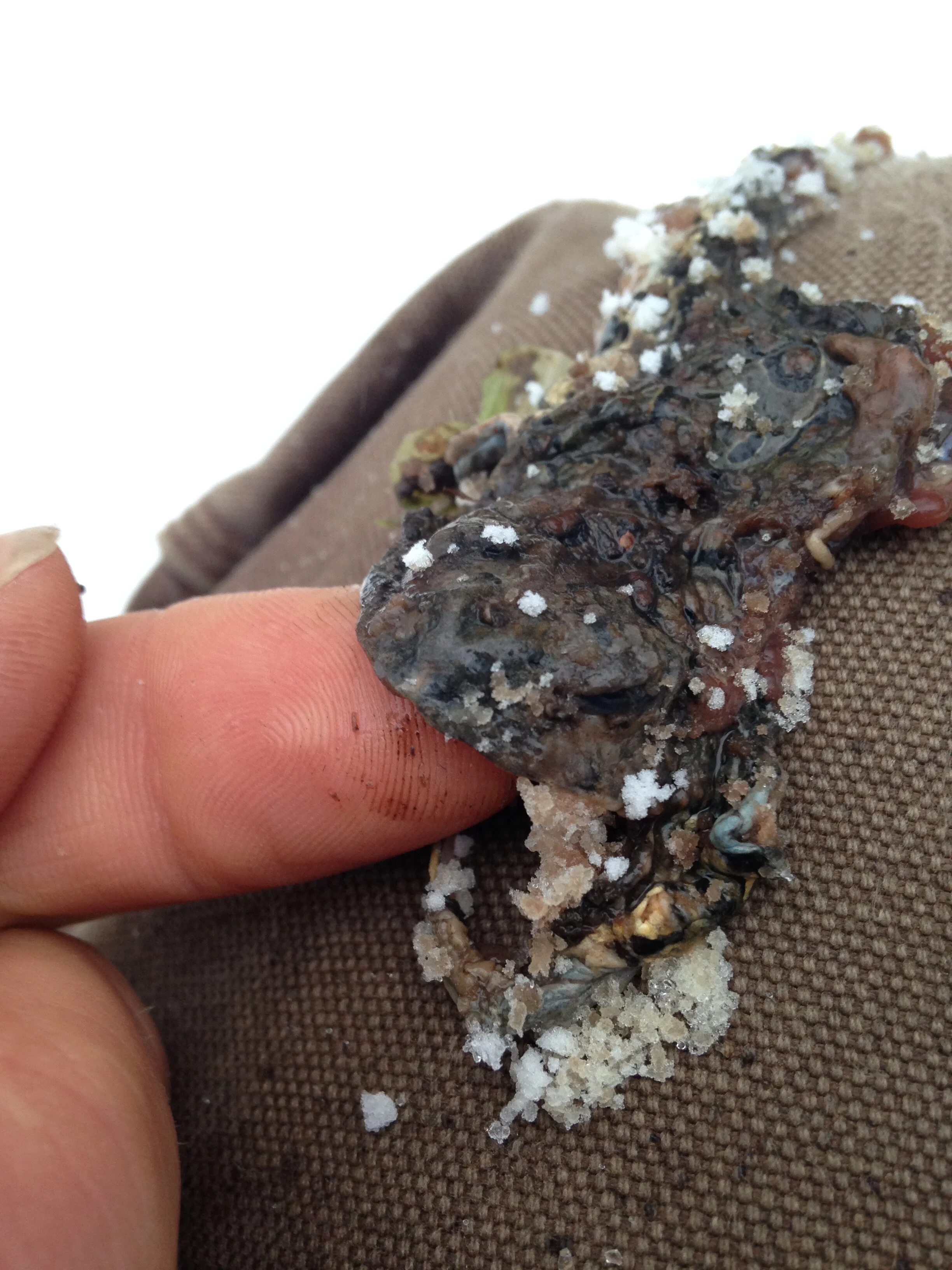
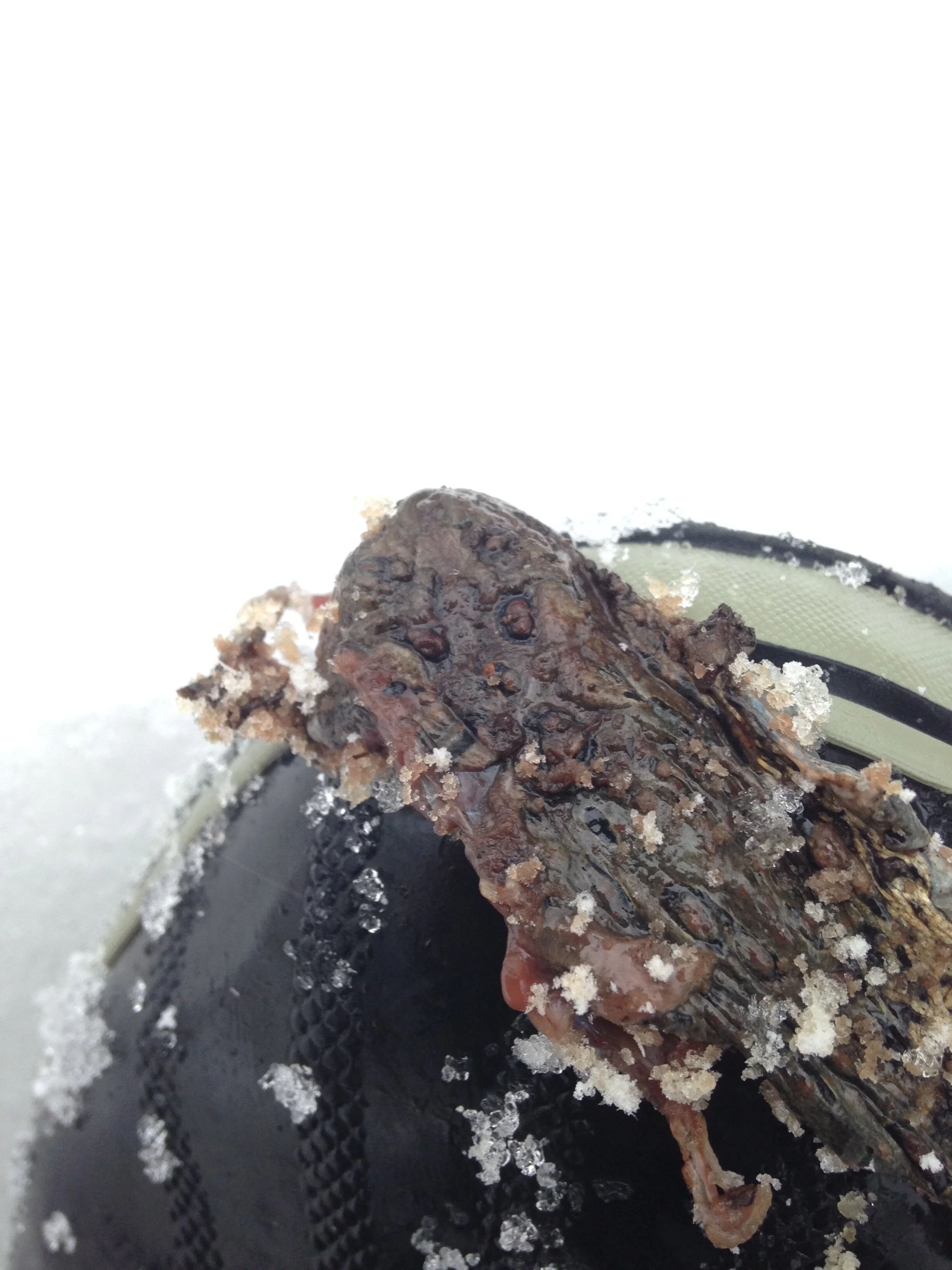

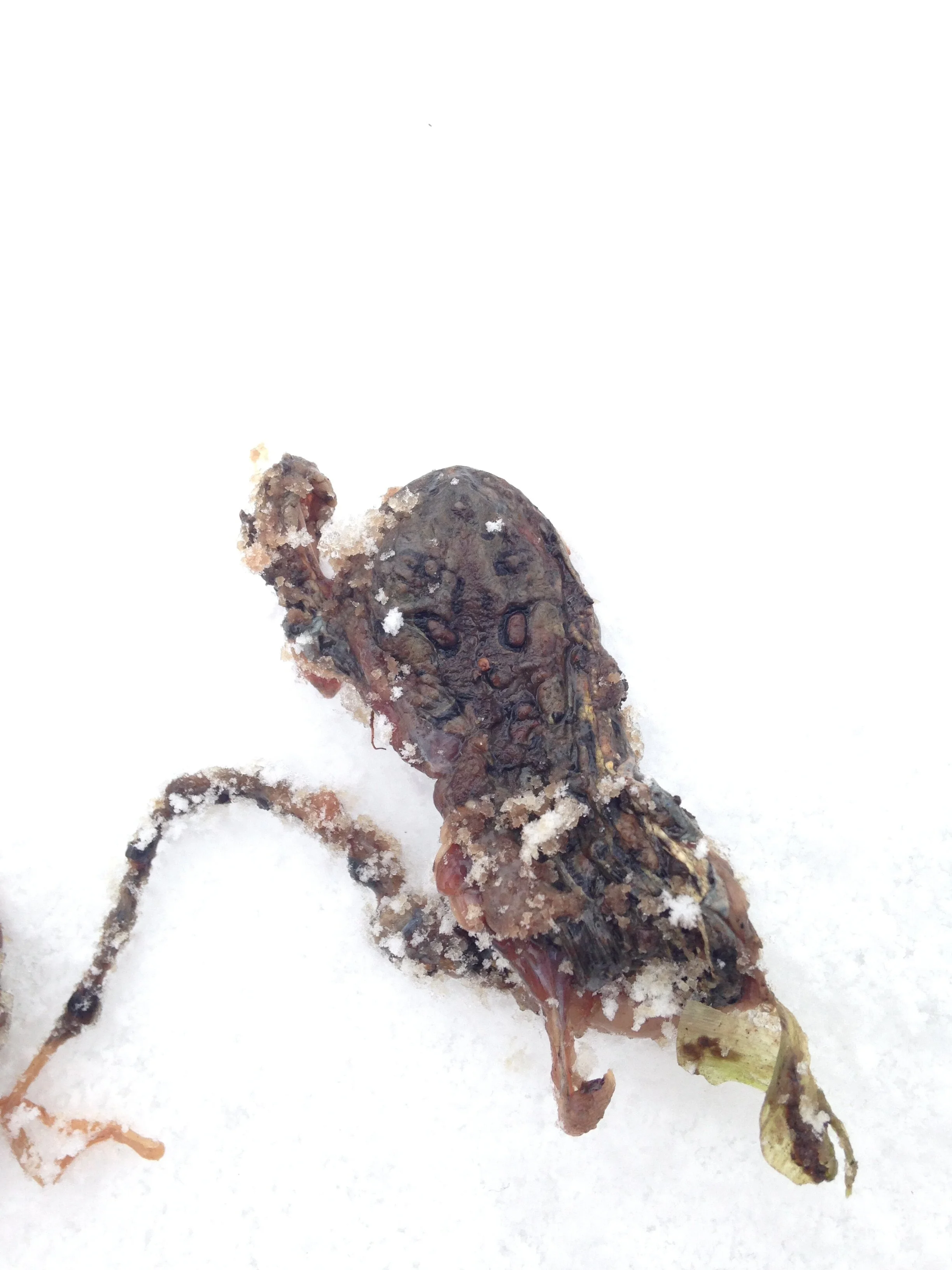
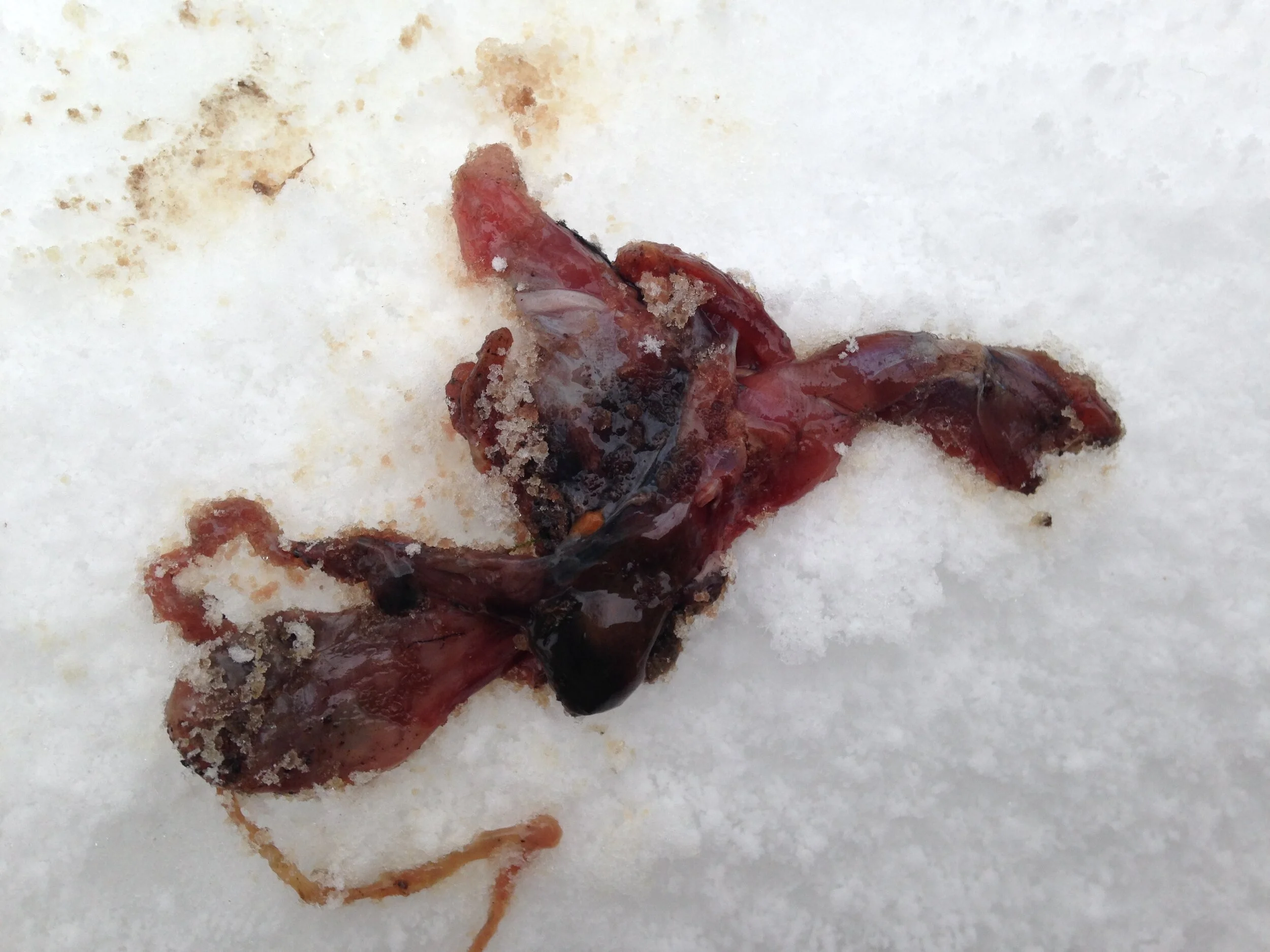
If you’ve read this blog before, or listened to the podcast, you know that I get excited when I find dead things. I get to learn sooooo much just by looking at them up close and take as much time as I need to to get to know the way things work, like what organs are what, or how does this limb move, or how did this animal die? So many questions can be asked by looking at and examining a dead animal, and I would rather examine an animal who died from predation by another animal than killed for some scientific research as naturalists used to do.
I looked at this animal for a while, totally distracted from my urgency to get home. I kneeled in the snow, knees wet and cold, for a long time holding this little carcass repeatedly taking photos and flipping them over to take photos of the underside, backside, underside again, all longing to see them better. I couldn’t tell what this was or what part of which animal it may have come from? The first photo shows two parts, and I was focused on the part of the carcass that was on the right side of the photo. This piece has an obvious rounded edge on the far right side, which was more firm than the rest of the animal. It felt like the cartilage in your ear, just as delicate but less pliable. I noticed that the long narrow structure stretching from right behind the rounded edge looked skeletal but it certainly wasn’t a skeleton I had seen before so I wasn’t even sure about that. The long stringy bit which tied the two pieces together reminded me of an intestine, but I also couldn’t be certain.
I decided to take one last photo and this one had to be extra close so I placed the remains on my leg so the camera wouldn’t be confused by the bright of the snow, and try to get that good shot which might give me the answer I wanted, and you know what? It worked.
I recognized the colours and shapes and size all in quick succession. It was a frog! As soon as I saw it, I couldn’t unsee it. The rounded face, the dark colour along with spotting, the size of the animal, even that spinal column which hadn’t really registered before. It was all coming together. I could see where the eye was, I could maybe make out a nostril.. so much of this animal became clear.
I am pretty sure this is/was a Northern Leopard Frog (Lithobates pipiens), who are common around here, but now I have to find out what the Leopard Frogs do in the winter. Do they hibernate? Go into torpor? Was it the Fox that ate this little Frog-dude? Or, did the Fox find someone else’s cache, like maybe a Mink, who is more likely to be in the river digging up frozen frogs from under the mud? So many questions all the time. Perhaps I’ll write a thing about Frogs in winter soon.
If you made it this far, thanks for reading it all. I appreciate it.

